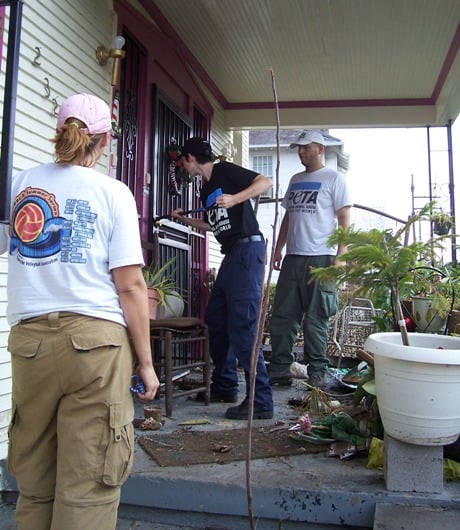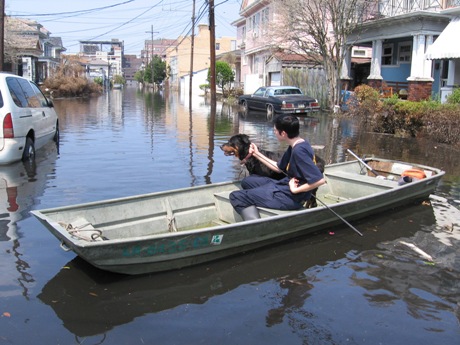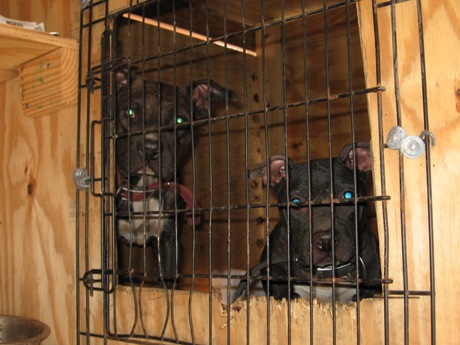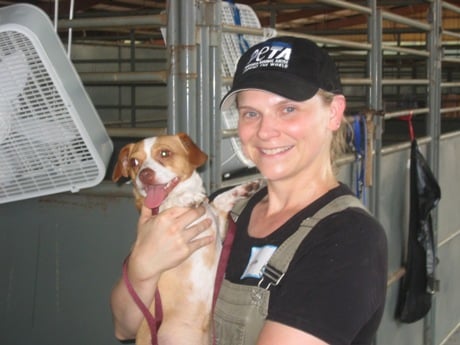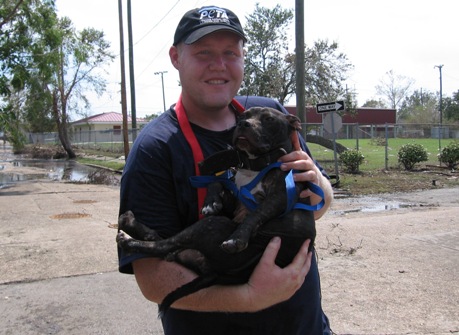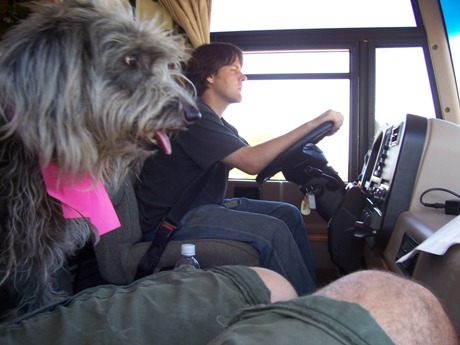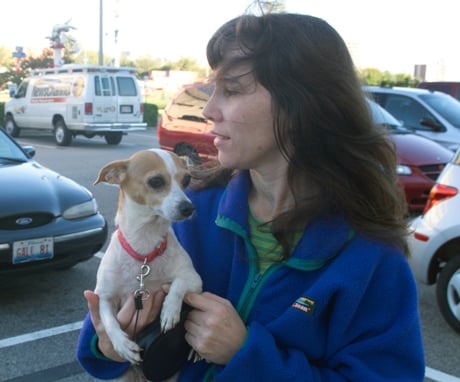When Hurricane Katrina slammed into the Gulf Coast 10 years ago, it became the worst natural disaster to strike the U.S. in more than a century. TV viewers were horrified to see images of the storm’s impact not just on the human residents but also on the local animals stranded on rooftops, clinging to trees, and swimming frantically toward media crews’ boats.
Many animals were left behind when their guardians were prohibited from taking them on rescue boats or helicopters. Some heroic souls adamantly refused to evacuate—even at gunpoint—if they couldn’t take their animals. These compassionate people risked their lives in order to care for their own animals as well as those of neighbors. By the time animal rescuers—delayed by red tape and initial reports of violence—were at last granted access to some of the worst-hit areas, many animals had been trapped in backyards and abandoned buildings for nearly two weeks. PETA and other groups dispatched teams that spent weeks breaking down doors, crawling through filth, wading through noxious floodwaters, and coaxing terrified animals to safety.
Sadly, they were too late for many of the animals chained in backyards or confined to crates, who were helpless to save themselves from rising floodwaters. One dog who had been locked inside a bathroom without food or water for weeks died in a rescuer’s arms.
But PETA’s teams, working with federal, state, and local officials, were able to rescue more than 300 cats, dogs, birds, and other animals, and they helped care for thousands more at emergency animal shelters. As the days passed and animals continued to be retrieved from rooftops, deserted streets, and abandoned homes, another crisis emerged—what to do with the thousands of rescued animals? Emergency animal shelters in Louisiana and Mississippi quickly reached capacity: Animals needed to be moved out in order to make room for those pouring in every day.
Several PETA team members hired an RV and transported 32 dogs to PETA’s headquarters in Norfolk, Virginia—a 15-hour drive. There, the dogs were met by waiting “foster parents” who would care for them until permanent guardians could be found.
Annie, who later became my dog, was one of those evacuees. The emergency shelter intake records indicated that she had been rescued from the Ninth Ward, one of the hardest-hit areas. She was frightened, thin, filthy, and matted as well as suffering from advanced heartworm disease, an indication that she had been neglected even before the hurricane hit. Despite the fact that she was microchipped, her guardians were never able to be located. Perhaps they were among the nearly 2,000 people who died in the storm, as was the case with the guardians of many other rescued dogs and cats.
Ten years later, Annie the survivor is still going strong, and she’s fearless during storms. She remains steadfastly calm, as if to say, “This is nothing. You have no idea what a real storm is.” She is the epitome of courage and resilience.
Katrina was a wake-up call. There is absolutely no doubt that many companion animals lost their lives because desperate people were unprepared for the catastrophe and left their four-legged family members behind. They weren’t alone: Government agencies were also unprepared for the crisis. In the aftermath of the storm, PETA supporter Rep. Tom Lantos and other lawmakers introduced a bipartisan bill requiring that government disaster plans include provisions for animals. Even so, some areas have ignored the law.
That’s why it’s vital to have a plan in place before disaster strikes. Have an animal emergency kit ready, including a harness, a leash, a carrier, bottled water, a week’s supply of food, bowls, vet records, ID tags, and, for cats, a litterbox and kitty litter. Never leave any animal behind—there’s no way of knowing what might happen to your home or when you’ll be able to return. Know your destination ahead of time. Not all emergency shelters accept animals, but many hotels and motels do. (Most suspend “no-pet” policies during disasters.)
You can also help by donating to PETA’s Investigations & Rescue Fund, which supports our disaster response team and educational efforts.
Written by PETA member and Annie’s dad Nani Tosoc.


